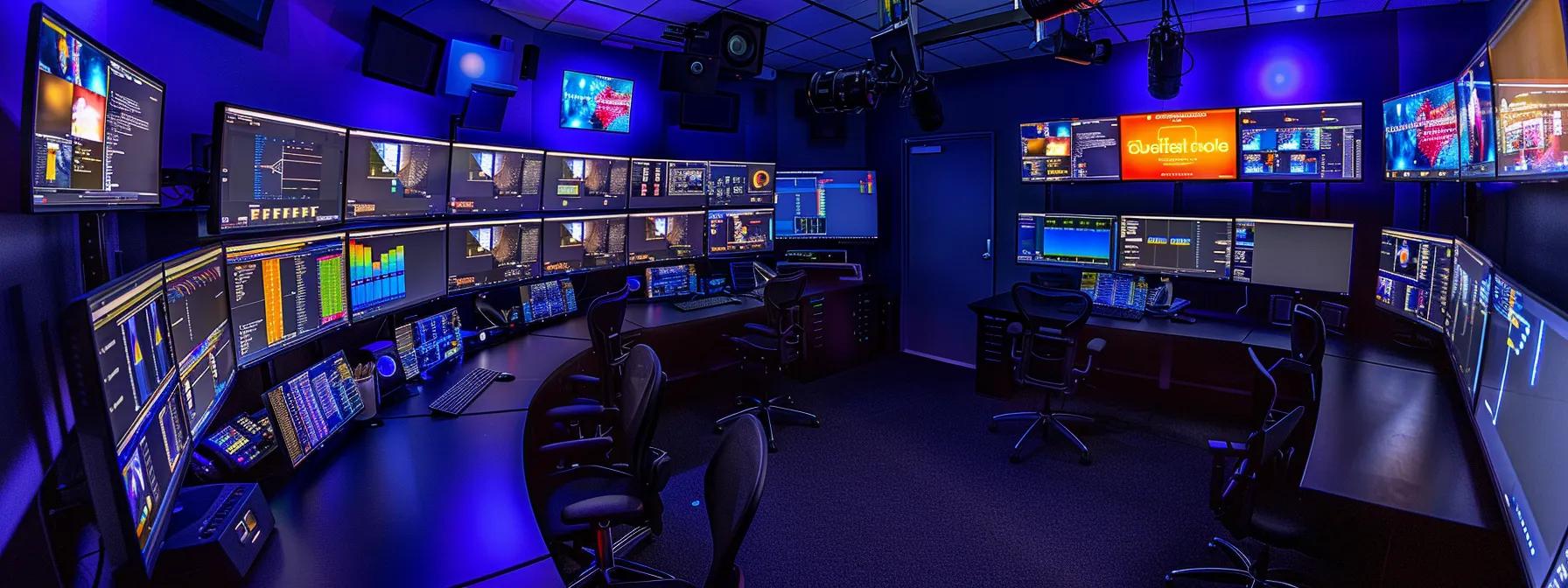What is Structured Data Cabling?
Structured data cabling is a holistic telecommunications infrastructure system that uses a set of standards-defined, universally compatible wiring schemes. It is built to handle multiple voice, data, video, and multimedia systems, irrespective of the manufacturer. This architecture offers a single point of administration that allows for changes, improvements, and repairs in an organized, streamlined, and systematic manner.
In a structured cabling system, the entire network is broken down into smaller, manageable blocks called subsystems, which are then meticulously linked. This network backbone is designed to serve the telecommunications needs of your business, from the simplicity of voice communications to the complexity of cloud computing.
Without proper cabling design, a network can quickly become a complex and chaotic mass of wires and cables, making troubleshooting a nightmare, reducing overall system performance and potentially leading to more frequent downtime. With structured cabling, your business is better positioned to handle the demands of today’s high-speed communications.
The Components of a Structured Cabling System
A structured cabling system is composed of several key components. These include the cabling itself, as well as hardware such as racks, patch panels, and network switches. This setup is designed to be flexible, allowing for easy changes, updates, and repairs.
An organized structured cabling system typically follows a layout that includes six subsystems:
Entrance Facilities
The entrance facility is the point at which the telecommunications service provider’s line enters the building, often referred to as the point of demarcation (demarc). This is the juncture where your business’s internal network connects with the external service provider network. It contains the physical cable connections as well as auxiliary devices such as cross-connects, protection devices, and demarcation blocks.
Equipment Rooms
Equipment rooms are the centralized homes for equipment and consolidation points that serve users within the same building or across multiple buildings. These rooms can house servers, routers, switches, and other important hardware that keep your network running. They also often serve as the focal point for the backbone cabling system, connecting different floors or various areas of a building.
Backbone Cabling
Backbone cabling, as the name implies, is the backbone of your network. It includes the transmission media (cables), main and intermediate cross-connects, and terminations. This cabling interconnects entrance facilities, equipment rooms, and telecommunications rooms, forming the primary pathway for data flow across the network.
Horizontal Cabling
Horizontal cabling refers to the cables that extend from the telecommunications room to individual workstations or outlets on a particular floor. It includes the cable terminations in the telecommunications room on one end and the work-area outlet on the other. These cables can be twisted pair, coaxial, or fiber optic, depending on the needs of the network and the distance to be covered.
Telecommunications Rooms
Telecommunications rooms serve as the common area where backbone and horizontal cabling intersect. It’s also the location for concentrators, repeaters, and other equipment needed to maintain network connectivity. These rooms are essential for managing and directing data traffic across the network, serving as vital connecting points within your structured cabling system.
Work Area Components
Work area components refer to all elements that are used to connect end-user equipment (like computers, phones, printers) to the communication outlets. These components can include patch cables, workstation cords, fiber jumpers, and adaptors. The design of these work areas should be user-friendly and supportive of rearranging and easy device additions or changes.

The Role of Structured Data Cabling in Business Infrastructure
In our interconnected world, data and communication are at the heart of any successful business. Structured data cabling provides the lifeline for all your business’s information to flow. A well-planned and executed structured cabling system ensures high-speed, reliable data transmission and provides the flexibility and scalability to accommodate future growth and changes.
Benefits of a solid structured cabling system include:
- Reliability: In an office ecosystem where a myriad of devices, from “VOIP phones and intercoms” to “network CCTV cameras” depend on a stable network connection, reliability is paramount. A structured cabling system offers this consistency, reducing the risk of downtime caused by errors and faults. Its organized nature makes it simpler to identify, locate, and rectify any issues, ensuring your communication devices and security systems work efficiently.
- Scalability: Today, you may just require a couple of “wireless access points” around the office. But as your business grows, so will your need for a robust network that can handle more devices, maybe even “network-based access control systems” for enhanced security. Structured cabling systems, with their high degree of flexibility, easily accommodate this expansion, future-proofing your business infrastructure.
- Cost-effectiveness: Maintenance and troubleshooting in an unorganized, convoluted network can turn into an expensive, time-consuming nightmare. However, a structured cabling system streamlines these processes, saving your business significant amounts of money in the long run. This efficiency extends to energy costs as well, as structured cabling often leads to less power consumption.
Unraveling the Cabling Conundrum
Choosing the right cables for your structured cabling system is like choosing the right foundation for your building; the choice can significantly impact the overall performance.
- CAT5e (Category 5 enhanced) Cable: This type of cable is the workhorse of many small to medium-sized businesses. It comfortably supports data transfer speeds up to 1 Gbps, which is adequate for general office uses. From handling calls on your “VOIP phone and intercoms” to transmitting data from your “network CCTV cameras,” CAT5e can manage it all efficiently.
- CAT6 (Category 6) Cable: When you require a bit more ‘oomph’ from your network, CAT6 cables are the way to go. These cables can handle data transfer speeds up to 10 Gbps over shorter distances, making them ideal for businesses that need to manage a larger flow of data. Whether it’s for a high-definition video conference call or managing access through your “network-based access control systems,” CAT6 won’t let you down.
- Fiber-Optic Cable: For large organizations and data centers that need the highest performance, fiber-optic cables are the prime choice. Transmitting data as light pulses, these cables can support extremely fast data transfer rates over long distances. From maintaining high-speed connections to multiple “wireless access points” around a large office to transmitting high-quality footage from “network CCTV cameras,” fiber-optic cables ensure smooth sailing.
Building Your Business’s Backbone
Your business’s structured data cabling system is not something that should be left to chance. It requires careful planning and professional installation to ensure that it meets your business’s needs today and in the future.
A key part of this planning process is understanding your current data requirements and future goals. This will help you determine the type and capacity of the cabling you need, as well as the best design for your structured cabling system.
Additionally, you’ll need to consider the physical layout of your office or facility. Factors such as the distance between network devices, the number of users, and the physical environment can all influence the design of your cabling system.
Finally, consider bringing in a professional cabling contractor. Their experience and expertise can be invaluable in ensuring that your cabling system is installed correctly, complies with industry standards, and is optimized for your business’s needs.
Your Bridge to Tomorrow’s Technology
In the grand scheme of business operations, it’s clear that a structured cabling system is not just a series of wires connecting your devices – it’s the foundation, the backbone, the bridge that carries your business into the realm of seamless digital integration and interaction.
This robust bridge, built with reliability, scalability, and cost-effectiveness in mind, is a must-have in today’s dynamic business world. From handling calls on VOIP phones, to maintaining network security with CCTV cameras, to ensuring seamless access control systems, the right structured cabling system facilitates the essential data traffic that is the lifeblood of your business.
Implementing such a system, however, isn’t a task for the uninitiated. It demands precision, a deep understanding of current needs, and the foresight to accommodate future growth plans. This is where LogicFortress steps in.
At LogicFortress, our mission is simple: “Bridging the Gap Between You and Technology”. We understand that the technology of today and tomorrow can seem daunting. However, with our team of dedicated professionals and a proven track record, we strive to make the process as seamless as possible for you.
From careful planning and professional installation to post-installation support, we are committed to ensuring your structured cabling system is not just a network of wires, but a strategic investment towards the success of your business.

In essence, LogicFortress is your partner in bridging the gap, connecting you and your business to the technology of tomorrow, today. Don’t wait until network failure interrupts your operations. Reach out to LogicFortress today. Let’s build your bridge to a brighter, more connected future.





